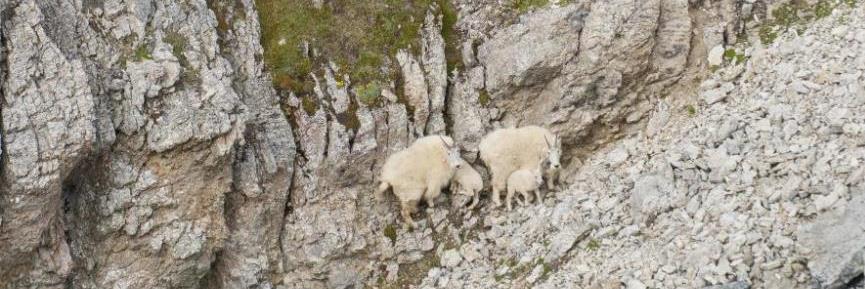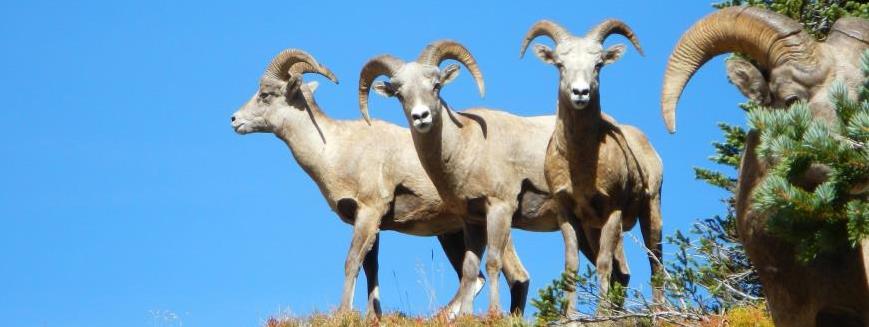Wildlife flight guidelines
Banff National Park
Banff National Park is home to bighorn sheep, mountain goats, and other wildlife which occupy treeless, alpine terrain and are known to flee from low flying aircraft, including Unmanned Air Vehicles (drones). Many in-park, low flying flights occur over alpine areas which can disturb all wildlife, especially mountain goats and bighorn sheep. Prolonged or repeated helicopter presence may displace wildlife from important habitat, elevate stress levels, reduce time spent feeding, nursing, and resting, and can increase risk of mortality. Helicopter flights have stronger effects in the spring when lambs and kids are born, and in the winter when food ability is decreased and travel is more difficult.

Mountain goats live in or near steep, rocky terrain which they use to escape predators. They are sensitive to low flying aircraft and will flee by scaling sheer cliffs.
Bighorn sheep prefer steep-sided gravel ridges and steep grassy slopes. They escape predators by running quickly along steep terrain for long distances.

The best goat habitat occurs where steep cliffs meet open vegetated slopes
Following these flight guidelines will help minimize wildlife disturbances.
Stay far
Fly more than 1000m from identified habitat. If you must land in wildlife habitat, descend and ascend as quickly as possible. Goats and sheep are most sensitive to disturbance when they are with young in May and June, and during the winter, when food availability is reduced and travel is more difficult. Give them more than 1000m during these times.
Stay over trees
The sound of aircraft is muffled when flying over treed areas. Fly over the middle of valleys if possible
Cross wildlife areas at right angles
If you must cross treeless wildlife habitat, do it at right angles rather than along a cliff line (goat habitat). Cross ridges at right angles at the narrowest point available.
Reminders:
- All flights landing within Banff National Park require advanced approval from the Superintendent.
- Recreational drone use is prohibited and commercial drone use requires a Restricted Activity Permit approved by the Superintendent.
- All commercial filming and photography require a Parks Canada permit
- Date modified :
